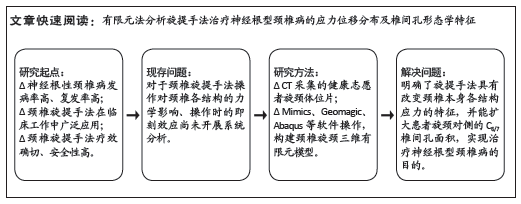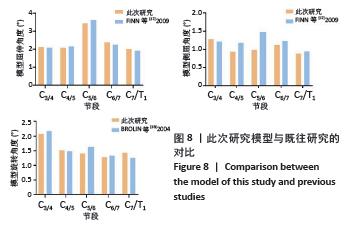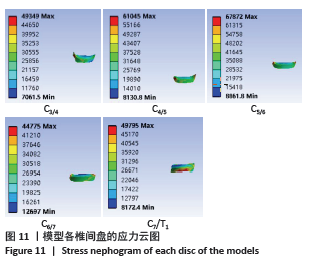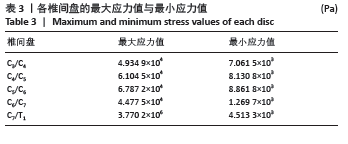[1]CHILDRESS MA, STUEK SJ. Neck Pain: Initial Evaluation and Management. Am Fam Physician. 2020;102(3):150-156.
[2] COHEN SP, HOOTEN WM. Advances in the diagnosis and management of neck pain. BMJ. 2017;358:j3221.
[3] SAFIRI S, KOLAHI A, HOY D, et al. Global, regional, and national burden of neck pain in the general population, 1990-2017: systematic analysis of the Global Burden of Disease Study 2017. BMJ. 2020;368:m791.
[4] THEODORE N. Degenerative Cervical Spondylosis. N Engl J Med. 2020; 383(2):159-168.
[5] YANG F, LI WX, LIU Z, et al. Balance chiropractic therapy for cervical spondylotic radiculopathy: study protocol for a randomized controlled trial. Trials. 2016;17(1):513.
[6] ZHU L, WEI X, WANG S. Does cervical spine manipulation reduce pain in people with degenerative cervical radiculopathy? A systematic review of the evidence, and a meta-analysis. Clin Rehabil. 2016;30(2):145-155.
[7] WEI X, WANG S, ZHU L, et al. Complementary and Alternative Medicine for the Management of Cervical Radiculopathy: An Overview of Systematic Reviews. Evid Based Complement Alternat Med. 2015;2015: 793649.
[8] BLANPIED PR, GROSS AR, ELLIOTT JM, et al. Neck Pain: Revision 2017 Clinical Practice Guidelines Linked to the International Classification of Functioning, Disability and Health From the Orthopaedic Section of the American Physical Therapy Association. J Orthop Sports Phys Ther. 2017;47(7):A1-A83.
[9] CARREON LY, ANDERSON PA, GLASSMAN SD. Cost-Effectiveness of Single-Level Anterior Cervical Discectomy and Fusion Five Years After Surgery. Spine J. 2012;12(9-supp-S):S11.
[10] 朱立国, 于杰, 高景华, 等. 旋转手法治疗神经根型颈椎病对疼痛的VAS评分临床研究[J]. 北京中医,2005,24(5):297-298.
[11] 王乾, 朱立国, 高景华, 等. 旋提手法治疗神经根型颈椎病的疗效观察[J]. 中医正骨,2009,21(6):9-11.
[12] DENG Z, WANG K, WANG H, et al. A finite element study of traditional Chinese cervical manipulation. Eur Spine J. 2017;26(9):2308-2317.
[13] 王宇, 雷建银, 李志强, 等. 椎间盘退变颈椎(C2-C7)在正常承载与推拿下的有限元分析[J]. 中国组织工程研究,2020,24(27):4278-4284.
[14] YOGANANDAN N, KUMARESAN S, PINTAR FA. Biomechanics of the cervical spine Part 2. Cervical spine soft tissue responses and biomechanical modeling. Clin Biomech (Bristol, Avon). 2001;16(1):1-27.
[15] 柳超, 王前, 张杰峰, 等. 不同内固定手术方式治疗寰枢椎复合骨折稳定性的有限元分析[J]. 中国脊柱脊髓杂志,2015,25(10):904-911.
[16] 冯敏山, 朱立国, 魏戌, 等. 颈椎旋提手法操作轨迹的动态捕捉研究[J]. 中国康复医学杂志,2011,26(2):176-177.
[17] FINN MA, BRODKE DS, DAUBS M, et al. Local and global subaxial cervical spine biomechanics after single-level fusion or cervical arthroplasty. Eur Spine J. 2009;18(10):1520-1527.
[18] BROLIN K, HALLDIN P. Development of a finite element model of the upper cervical spine and a parameter study of ligament characteristics. Spine (Phila Pa 1976). 2004;29(4):376-385.
[19] GILCREASE-GARCIA BM, DESHMUKH SD, PARSONS MS. Anatomy, Imaging, and Pathologic Conditions of the Brachial Plexus. Radiographics. 2020; 40(6):1686-1714.
[20] 魏戌, 王旭, 孙凯, 等. 中医手法治疗颈椎病的研究现状与展望[J]. 中华中医药杂志,2020,35(10):4781-4784.
[21] WELCH-PHILLIPS A, GIBBONS D, AHERN DP, et al. What Is Finite Element Analysis? Clin Spine Surg. 2020;33(8):323-324.
[22] 冯敏山.旋提手法的力学测量及模拟手法对颈椎髓核内压力影响的实验观察[D]. 北京: 中国中医科学院,2007.
[23] MALONE Q, PASSMORE S, MAIERS M. Comparing Two Moderate-to- Vigorous Physical Activity Accelerometer Cut Points in Older Adults With Neck and Back Disabilities Undergoing Exercise and Spinal Manipulation Interventions. J Aging Phys Act. 2020;28(2):255-261.
[24] 窦云龙, 高晓平, 吴毅文. 腰椎间盘突出症手法治疗髓核还纳的观察[J]. 颈腰痛杂志,2012,33(5):376-378.
[25] 梅凌, 李义凯. 定点旋转手法作用下颈椎各节段亚生理区的运动形式[J]. 医用生物力学,2013,28(3):279-283.
[26] 金斌, 邱桂春, 李义凯. 颈椎定点旋转手法所致咔哒声响的定位研究[J]. 南方医科大学学报,2007,27(4):421-422+426.
[27] 范志勇, 查和萍, 谢兵, 等. 对中医脊柱推拿所致“咔哒”声响的相关临床思考[J]. 中国康复医学杂志,2012,27(2):159-161.
[28] 黄学成, 叶林强, 江晓兵, 等. 三维有限元模型分析旋转手法中旋转方向对颈椎间盘位移和椎间孔容积的影响[J]. 中国组织工程研究,2018,22(3):404-408.
[29] CAO S, CHEN Y, ZHANG F, et al. Clinical Efficacy and Safety of “Three- Dimensional Balanced Manipulation” in the Treatment of Cervical Spondylotic Radiculopathy by Finite Element Analysis. Biomed Res Int. 2021;2021:5563296.
[30] GUO X, ZHOU J, TIAN Y, et al. Biomechanical effect of different plate-to-disc distance on surgical and adjacent segment in anterior cervical discectomy and fusion - a finite element analysis. BMC Musculoskelet Disord. 2021;22(1):340.
[31] ZHOU J, GUO X, KANG L, et al. Biomechanical Effect of C5/C6 Intervertebral Reconstructive Height on Adjacent Segments in Anterior Cervical Discectomy and Fusion - A Finite Element Analysis. Orthop Surg. 2021;13(4):1408-1416.
[32] 石慧烽. 基于脊髓放疗保护的颈椎有限元分析以及临床测试[D]. 上海: 上海交通大学,2019.
[33] XUE F, CHEN Z, LI Y. Effects of cervical rotatory manipulation on the cervical spinal cord: a finite element study. J Orthop Surg Res. 2021; 16(1):737.
[34] 吴宝烽, 冯梓誉, 雷舒扬, 等. 基于流固耦合有限元模型评估颈椎旋转手法下颈动脉粥样硬化斑块的破裂风险[J]. 医用生物力学, 2022,37(4):684-691. |






